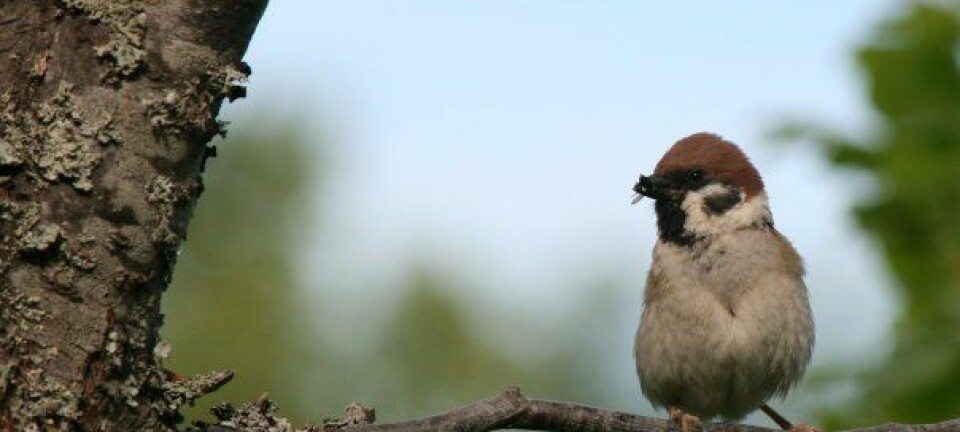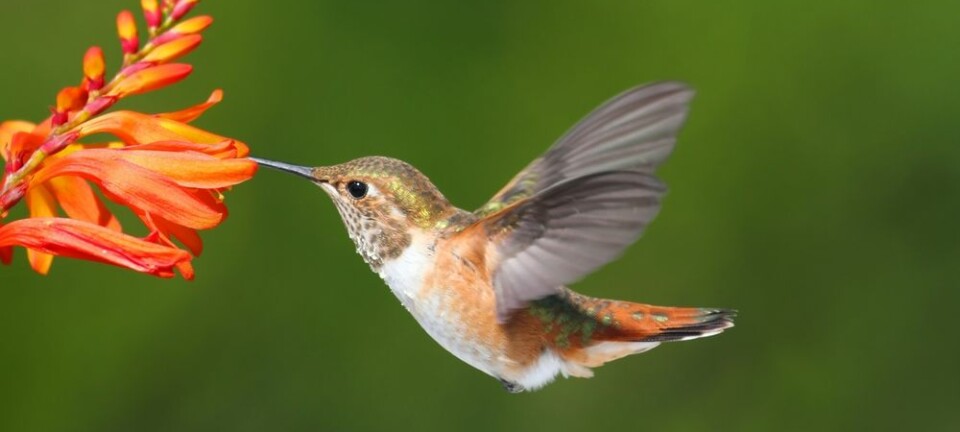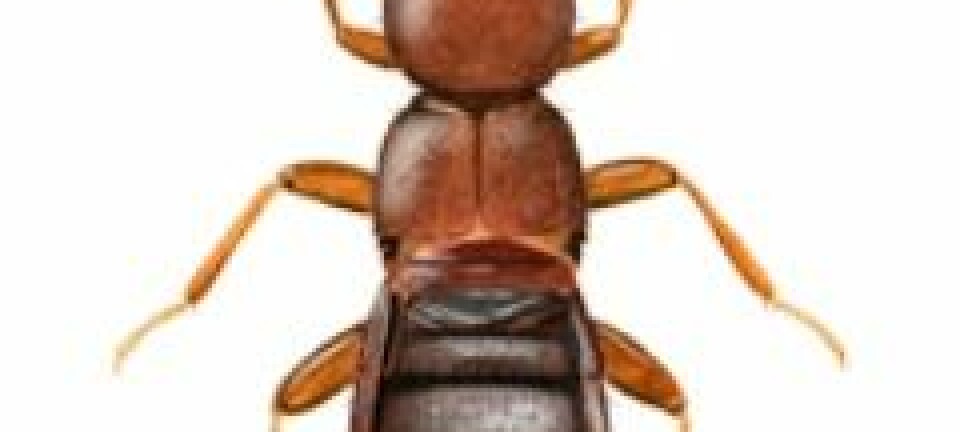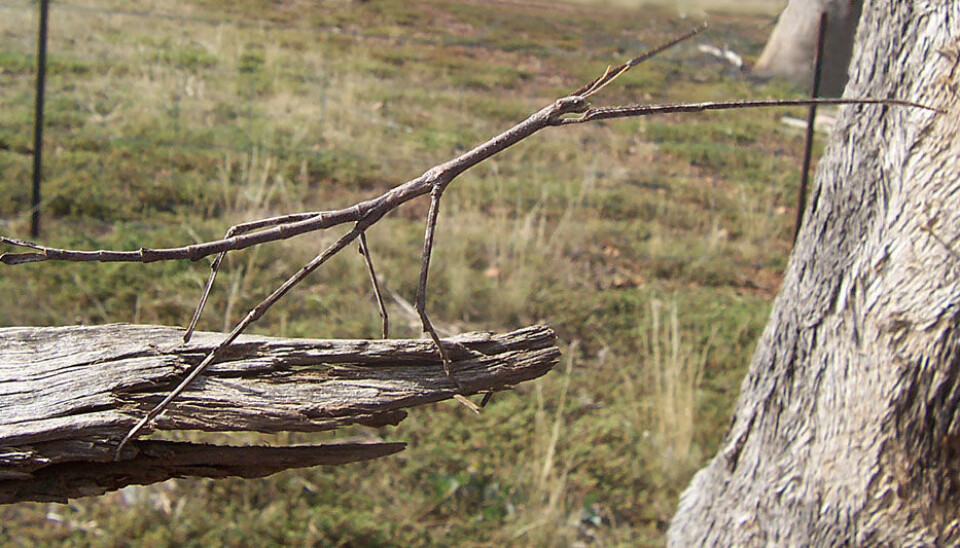
Why does poor mimicry work?
Hoverflies mimic the appearance of wasps to avoid being eaten. But even to our untrained eyes they seem to be doing a shoddy job. So why does it work anyway?
Mimicry is not uncommon in nature. One species will draw advantages from looking like another: An insect might look like a stick. A harmless snake might have the same markings as one that is venomous. A flower blossom might even look like a fly.
This can act like camouflage – make the mimic fade into the landscape – or it can enable an organism to frighten potential enemies or attract gullible prey.
Sometimes such mimicry is flabbergasting. The walking stick, an insect native to Australia, looks so much like a small branch that it is often impossible to spot.
Poor costumes
But in other cases the imitations are really poor. Most people can tell the difference between a wasp and a yellow-and-black hoverbee. So how can these juicy an un-stinging flies con predators?
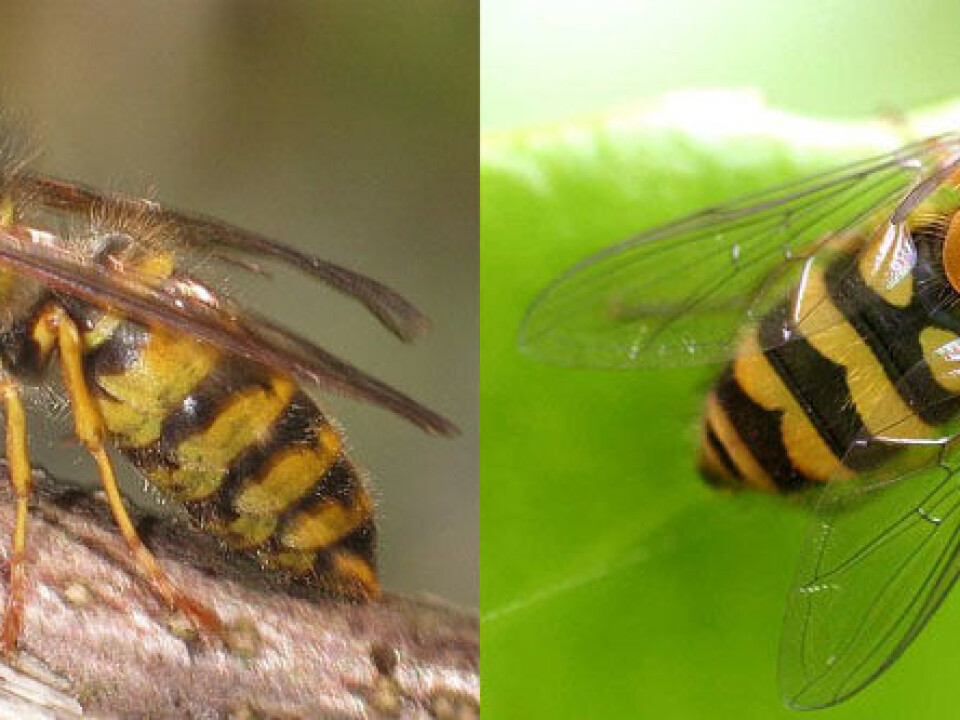
Such imperfect mimicry has puzzled scientists for a long time. But Swedish biologists have come up with a reason why certain species get by with a less than identical costume:
Predators appear to use equally inadequate techniques for recognising their victims.
Few characteristics
“Predators seem to use only one or a few important aspects of the prey’s appearance to distinguish between edible and inedible prey. So if a prey mimics those aspects, it will be protected,” explains Baharan Kazemi of Stockholm University, one of the authors of the study.
Kazemi and her Stockholm University colleagues tested their idea by setting up artificial prey for blue tits. First they trained the birds to catch a number of types of prey of different colours, patterns and shapes and then mimics were presented to the birds to see how readily they learned the difference between good food and non-food.

It turned out that the blue tits only concentrate on the most striking aspects of a prey’s appearance to distinguish between edible and inedible prey. In this case it was colours. The birds overlooked differences in patterns and shape, even though they are capable of learning such distinctions.
Colour is key
This meant that even edible prey which shared the same colouring as inedible creatures enjoyed nearly full protection, even though their resemblance to the model was otherwise quite a mismatch.
Potential prey that was otherwise perfectly matched in shape or patterning – but sported the wrong colours – gained almost no protection from their appearance.
This provided the scientists with a feasible explanation for the examples of shoddy mimicry in nature:
If predators only have an eye out for certain characteristics, there is no evolutionary impetus for a more identical appearance.
------------
Read the Norwegian version of this article at forskning.no
Translated by: Glenn Ostling
